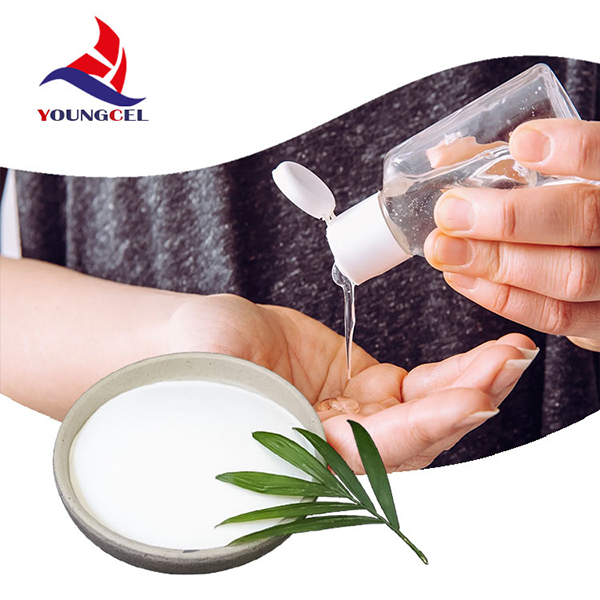Cellulose Polymer Nature's Versatile Biomaterial
Cellulose is a natural polymer that serves as the backbone of plant cell walls. Composed of long chains of glucose molecules linked together by β-1,4-glycosidic bonds, cellulose plays a crucial role in providing structural support to plants. Its abundance in nature, particularly in wood and cotton, makes it one of the most widely distributed organic polymers on Earth, with an estimated annual production of over 100 billion tons.
Properties and Structure of Cellulose
The unique characteristics of cellulose derive from its molecular structure. Cellulose fibers are crystalline in nature, leading to high tensile strength and rigidity. The extensive intra- and inter-molecular hydrogen bonding among cellulose chains contributes to its strength and stability. This crystalline nature allows cellulose to resist degradation, making it an excellent material for various applications.
Additionally, cellulose is biodegradable and non-toxic, making it an environmentally friendly option compared to synthetic polymers. It is insoluble in water due to its tightly packed structure, but it can be processed through various methods to produce derivatives that enhance its solubility and functionality.
Applications of Cellulose Polymers
Cellulose polymers have a wide range of applications across various industries due to their versatile nature. One of the most significant applications is in the textile industry. Cellulose fibers, such as cotton, rayon, and lyocell, are essential for manufacturing clothing and other textile products. These fibers offer natural comfort, breathability, and biodegradability, making them popular choices among environmentally conscious consumers.
In the paper industry, cellulose is the fundamental component used to produce paper and cardboard. The processing of wood pulp, which is rich in cellulose, results in different grades of paper utilized for writing, printing, and packaging. Paper products derived from cellulose are also recyclable, further enhancing their sustainability.
'cellulose polymer'

Moreover, cellulose derivatives have made significant contributions to the food and pharmaceutical industries. Cellulose can be chemically modified to produce various derivatives such as carboxymethyl cellulose (CMC), hydroxypropyl cellulose (HPC), and cellulose acetate. CMC is widely used as a thickening agent and stabilizer in food products, while cellulose acetate finds applications in drug delivery systems and as a biodegradable alternative to traditional plastics.
The cosmetic industry has also embraced cellulose polymers for their thickening and film-forming properties. Cellulose-based ingredients enhance the texture and performance of skincare and makeup products, making them smoother and more appealing to consumers.
Environmental Impact and Future Perspectives
As the world grapples with plastic pollution and environmental sustainability, cellulose presents a promising alternative to synthetic materials. The biodegradability of cellulose ensures that products made from it do not contribute to long-term environmental waste. Moreover, the cultivation of cellulose-producing plants like hemp and bamboo requires fewer resources compared to petroleum-based products, making cellulose a more sustainable choice.
In recent years, there has been a growing interest in nanocellulose, which refers to cellulose at the nanoscale. Nanocellulose exhibits extraordinary properties, including high surface area, light weight, and mechanical strength. Its potential applications range from enhancing the properties of composite materials to serving as a platform for drug delivery and tissue engineering.
Researchers are also exploring methods to improve cellulose extraction and processing techniques, making them more efficient and cost-effective. Innovations in biotechnology may lead to genetically modified organisms that can produce cellulose with specific characteristics tailored to various applications.
Conclusion
Cellulose polymers are a remarkable example of nature's ingenuity, providing an array of applications across diverse industries. With their biodegradability, renewability, and versatility, cellulose and its derivatives offer a sustainable alternative to synthetic materials. As research and technology continue to advance, the future of cellulose polymers looks promising, paving the way for innovative solutions that promote environmental sustainability while meeting the needs of modern society.
-
A Comprehensive Guide to Methyl Ethyl Hydroxyethyl Cellulose: Applications and Industry InsightsNewsNov.24,2025
-
Understanding Methyl 2 Hydroxyethyl Cellulose: Uses, Benefits & Industry InsightsNewsNov.24,2025
-
Hydroxyethyl Methyl Cellulose HEMC: Industrial Uses, Benefits & Future TrendsNewsNov.23,2025
-
HEMC Cellulose: Versatile & Sustainable Industrial Polymer | YoungcelNewsNov.23,2025
-
Methyl Hydroxyethyl Cellulose: Versatile Building Block for Industry & SustainabilityNewsNov.23,2025
-
CAS 9032 42 2: Understanding Polyvinyl Alcohol's Impact on Industry & SustainabilityNewsNov.22,2025




